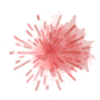In the Spotlight: Northwell and Noticing The Food Experience
on 2019/04/01
category Looking, Noticing, Spotlight, Video

In an effort to transform the food Experience in hospitals, Northwell Health hired Michelin Star chef, Bruno Tison, to create fresh, high-quality menus to enhance the healing process in 23 of their New York facilities. Chef Tison’s aim is to ensure every patient receives “great food of the quality of a restaurant.”
We asked Sven Gierlinger, Chief Experience Officer at Northwell Health and 2017 Inside Out Lab Partner, how the knowledge of the powerful principle of Noticing helped him envision the food Experience anew. Here’s what he shared:
“At Northwell Health, we see health care differently and embrace a spirit of inquiry and innovation. Everything we do revolves around our true “North” – our patients, families, and communities we proudly serve – and providing them with the quality and empathetic care they deserve. We have been on a journey of cultural transformation and armed with the knowledge of Noticing, we took a step back and examined our organization holistically. What we found was that health care is a beautiful and intricate web of culture, process, human touch, behavior, policy, accountability, and transparency.
As we took a deeper LOOK, we Noticed that food, a basic human need, is an absolute foundation to a greater Experience. Historically, food in health care has been seen as a liability – a cost item that adds no value to medical care. However, listening to the ‘voice’ of our patients and families, we knew our organization had to make food and wellness a strategic priority. Food touches every aspect of care – it is nourishment, comfort, and even fun, but ultimately, food is healing. We partnered with Chef Bruno Tison, adding his vision and Experience to our dedicated team to redefine hospital food quality and standards in hopes of creating an enhanced overall Experience. Chef Tison is focusing on whole ingredients and cutting back on processed ones, reducing sugar and salt content. He’s introduced dishes such as an antibiotic-free pork chop over Israeli couscous and chicken soup from scratch with whole chickens and vegetables. While rethinking the whole food Experience, our goal is to create healthier foods that our patients and guests look forward to and that meet their desires. We are excited to where our food transformation will take us.”










